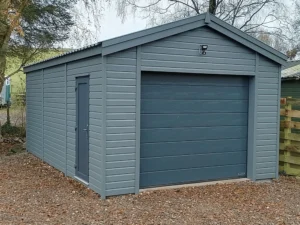A well-designed home hygiene station can provide peace of mind, especially in times of illness, recovery, or caregiving. With access to medical supply online Canada, it’s easier than ever to source the right tools and equipment to create a safe and comfortable hygiene space at home. Whether you’re caring for a loved one or simply want to be prepared, understanding the essentials of setup, accessibility, and comfort is key.
Understanding the Purpose of a Home Hygiene Station
A home hygiene station is more than a collection of supplies. It is a dedicated area set up to facilitate regular cleaning, personal care, and medical needs in a way that minimizes stress and promotes dignity. These stations are particularly helpful for:
- Individuals with limited mobility
- Seniors who wish to age in place
- Post-surgical recovery at home
- Chronic illness management
- Families managing contagious illnesses
By consolidating hygiene tools into one organized and accessible area, you ensure routine tasks are less chaotic and more efficient.
Choosing the Right Location
The location of your hygiene station plays a pivotal role in its effectiveness. Consider the following factors:
Accessibility
Choose a space that is easy to access for both the individual and the caregiver. This could be a section of the bathroom, a corner of the bedroom, or even a rolling cart that can be moved around.
Privacy
Privacy is crucial for comfort. If the station is in a shared space, consider portable screens or curtains to allow for discreet hygiene routines.
Proximity to Water and Waste Disposal
Ideally, your station should be near a water source such as a sink or be equipped with items like no-rinse bathing wipes. Access to trash bins or disposable waste bags is equally important for maintaining cleanliness.
Essential Supplies for Your Hygiene Station
Once you’ve selected the ideal location, the next step is gathering essential supplies. Depending on the individual’s needs, your list may vary, but common items include:
Personal Hygiene Products
- Antibacterial wipes or cloths
- No-rinse bathing wipes or waterless shampoos
- Disposable gloves
- Alcohol-based hand sanitizer
- Moisturizing lotion to prevent dry ski
Medical Supplies
- Disposable underpads or bed protectors
- Incontinence products
- Face masks
- Thermometer
- Blood pressure monitor or glucose meter (if needed)
Cleaning and Safety Equipment
- Disinfectant sprays and wipes
- Trash bags with sealable tops
- Hand soap and paper towels
- Easy-to-clean storage bins or trays
Comfort Items
- Cushioned seating or pillows
- Non-slip mats
- Adjustable lighting for visibility during nighttime care
Storage and Organization Tips
Good organization helps maintain both cleanliness and mental clarity in caregiving settings. Here’s how to keep your hygiene station efficient:
Use Clear Containers
Clear bins make it easy to see and access contents quickly. Label each bin for categories like “daily use,” “medical supplies,” and “backup stock.”
Establish a Refill Routine
Running out of supplies can create unnecessary stress. Set a regular time each week to check inventory and restock as needed.
Keep Frequently Used Items Within Reach
Place the most used supplies on top or in front of drawers and bins. Less commonly used items can be stored higher or lower depending on accessibility.
Maintaining Cleanliness and Sanitation
A hygiene station should reflect the very idea it represents: cleanliness. It should be kept as sterile and tidy as possible.
Daily Maintenance
- Wipe down all surfaces with disinfectant
- Replace any soiled linens or disposable items
- Check expiration dates on products
Weekly Deep Clean
- Remove all items and disinfect the storage space
- Wash any reusable towels or cloths in hot water
- Reassess layout for functionality
Keeping the area sanitary not only prevents infections but also promotes mental well-being by reinforcing the sense of care and order.
Comfort and Emotional Considerations
Hygiene routines can sometimes be uncomfortable or even embarrassing for those receiving care. It’s important to incorporate empathy into the setup and usage of your station.
Offer Choices
Allow the person receiving care to choose between different products when possible. For example, let them pick a preferred lotion scent or brand of wipes.
Involve Them in the Routine
Even small tasks like handing over a towel or applying moisturizer can help maintain dignity and independence.
Create a Relaxing Atmosphere
If the person spends a lot of time in the hygiene area, soft lighting, calming scents, and even gentle background music can create a more peaceful environment.
Safety Measures
Safety is a crucial component of any hygiene station, especially for elderly individuals or those with limited mobility.
Prevent Slips and Falls
Install non-slip mats and make sure the floor is always dry. Consider using a shower chair or bench if bathing is involved.
Minimize Clutter
Keep pathways clear and avoid unnecessary items that can cause tripping.
Emergency Readiness
Have a phone or emergency alert device nearby, especially if the person may be alone during part of the day.
Adapting Over Time
A home hygiene station is not a one-time setup. It should evolve based on the changing needs of the person using it.
Regularly Review Needs
Health conditions can change, and so should your supplies and setup. Consult with a healthcare provider regularly to ensure your station meets current needs.
Upgrade as Needed
You may start with basic items, but as needs evolve, consider adding more advanced tools like mobile commodes or lift aids.
Involve Professional Input
Don’t hesitate to involve a nurse or occupational therapist to evaluate your setup and suggest improvements tailored to the individual’s situation.
Setting up a home hygiene station is an investment in health, safety, and emotional well-being. By approaching the process thoughtfully—from location and supply selection to organization and comfort—you can create a space that supports both the caregiver and the individual receiving care. In the end, a little planning can make a world of difference in daily life.
Read more: What Is Lead Generation and Why It’s Vital for Every Business
The Smartest Dental Habit You’re Probably Not Doing Wearing a Custom Night Guard
Securing Your Future: The Essential Guide to Life Insurance










